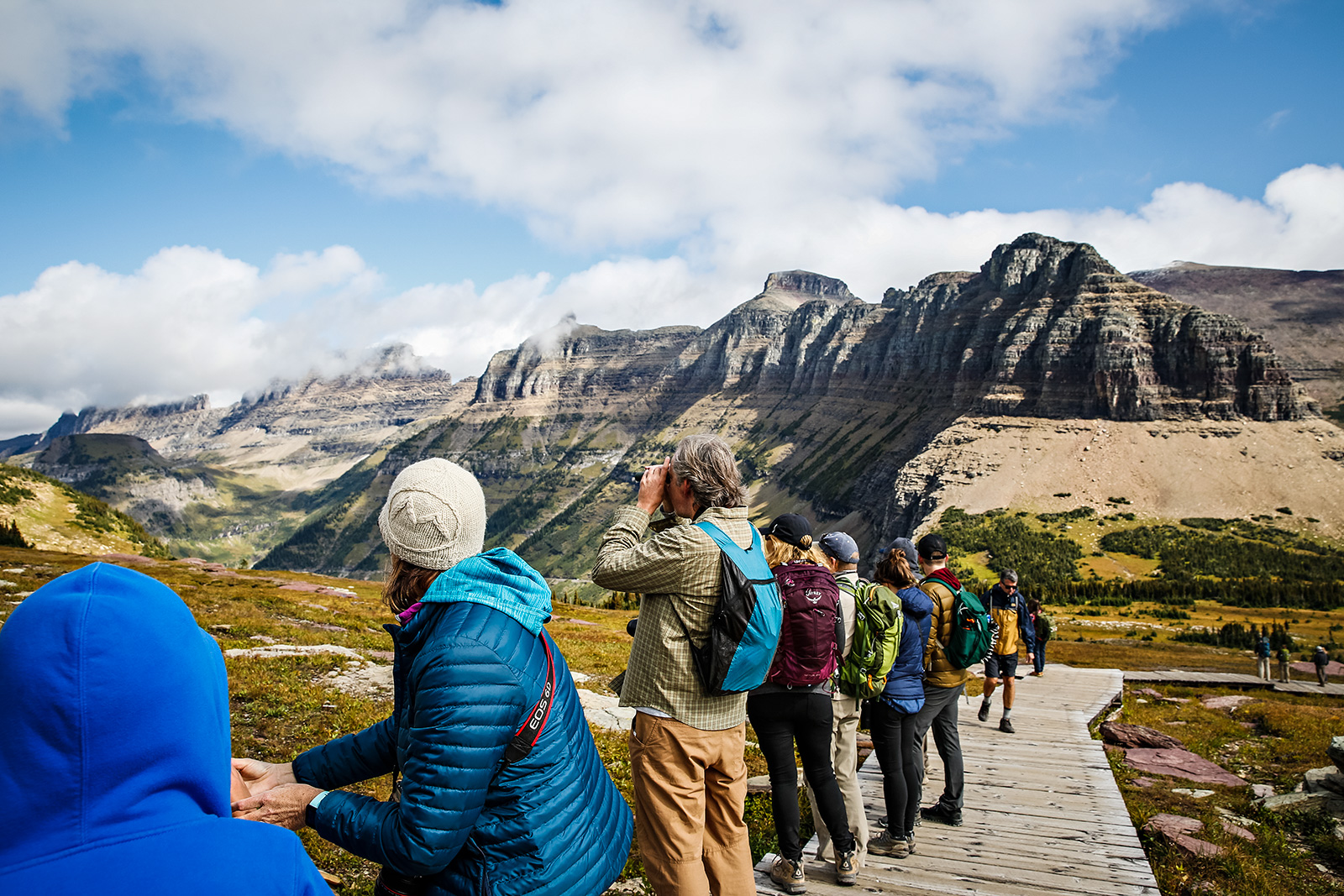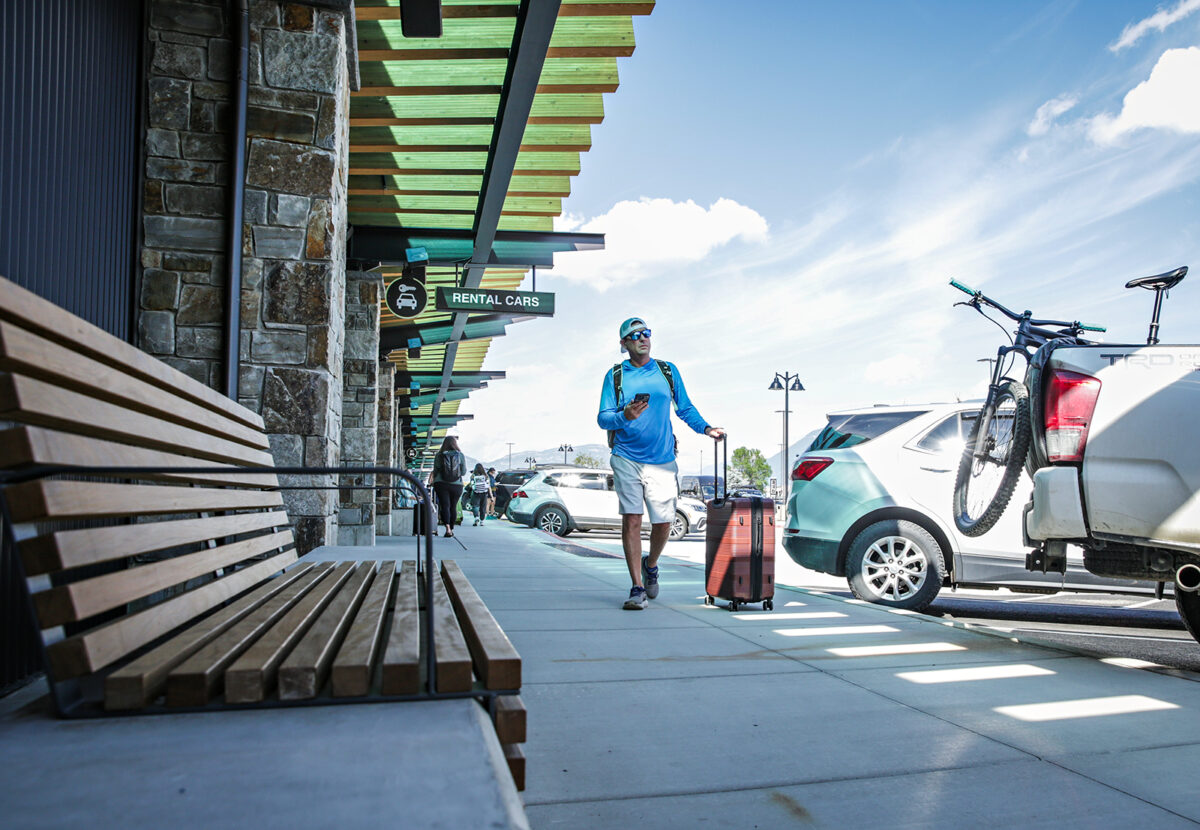Canadian Travel Drops as Domestic Tourism Remains Flat in Northwest Montana
U.S.-Canada border crossings at Roosville were down 25% this spring while businesses are reporting a spike in last-minute, short-term trips as tourists navigate the unknown
By Maggie Dresser
As summer travel peaks in the Flathead Valley, businesses are reporting flat domestic tourism compared to 2024 with an uptick in last-minute trips and a 25% decline in Canadian travel amid a weak currency, economic uncertainty and tense border relations.
Northwest Montana is following nationwide trends of strong domestic travel and a drop in international travel, which tourism bureau experts say is directly correlated to the unpredictability surrounding tariffs and fear of inflation.
Canadian credit card spending was down 44% in April, a slight improvement from the 56% drop in March, according to Discover Kalispell Executive Director Diane Medler. In June, there was a 22% year-over-year drop in crossings from Canada at the Roosville border crossing near Eureka with a 25% drop in May.
Medler says Canadians are also canceling trips for things like youth sporting events and largescale hotel reservations.
The drop in international travel and the negative sentiment has prompted Montana’s tourism bureaus to temporarily cease marketing in Canada and have redirected efforts elsewhere.
“We continue to let Canadians know we welcome them back as soon as they are ready to come,” Medler said.

But even as international travel falls short this summer, bureau directors say domestic tourism spending is flat compared to last year, with hotel occupancy at about 75%, and there’s an uptick in last-minute, short-term visits from neighboring states.
According to the University of Montana Institute for Tourism and Recreation Research (ITTR), the average nights spent in Montana was five nights in 2024.
“We’re seeing this happening over the last decade,” Explore Whitefish Executive Director Zak Anderson said. “There are shorter decision-making windows.”
Medler says this has prompted Discover Kalispell to promote road trip tourism.

According to ITTR data, 74% of visitors arrived by car while 11% used an RV or trailer with 14% flying in 2024.
While most tourists drive as their primary mode of travel, Glacier Park International Airport (GPIA) continues to break records each year.
In June, GPIA saw 61,377 boardings, a 12% year-over-year increase. By comparison, there were only 26,842 boardings in April during the slow season.
“Traveler sentiment is really showing that they are still planning value-focused trips with uncertainty in the economy,” Medler said. “They’re staying closer to home.”
Racene Friede, the President and CEO of Western Montana’s Glacier Country, said spending data reveals a shift in trends, with consumers spending more on food and beverage and less on retail. According to spending data, 39% is spent on food and beverage with 20% on retail, 17% on fuel and 17% on accommodations.
While overall domestic spending is unchanged, Friede emphasized the uncertainty that is driving travel choices and tourism trends.
“I just want to reinforce, there’s been a lot of unknowns,” Friede said. “We’re trying to monitor what’s on the ground and understanding the capacity of the community and make sure there’s a steady flow that businesses can rely on.”
In mid-July Flathead Valley residents felt the tourism pressure as events like music and arts festivals and sporting events all simultaneously occurred over the same weekend.

On the weekend of July 18, Under the Big Sky music festival drew 20,000 attendees while the Event at Rebecca Farm brought more than 200 competitors. The Glacier Art Museum – formerly the Hockaday Museum of Art – hosted its annual Arts in the Park event, which typically brings in close to 100 artists.
Flathead County Sheriff Brian Heino estimates there were roughly 30,000 additional nonresidents in the Flathead Valley during that weekend.
Glacier National Park remains a top attraction for tourists, which brings in 44% of the state’s visitors. In June, the park saw 575,577 visitors, up slightly compared to 549,591 in 2024. Year-to-date, there have been 923,085 visitors to the park.
During peak summer months, local officials continue to promote a sustainable tourism model to educate visitors about things like outdoor etiquette and safety.
Drowning is the number one cause of death in Glacier National Park, according to officials, and Medler says Discover Kalispell is focused on water safety education and promoting services like Montana Fish, Wildlife and Parks lifejacket loaner program.
In Whitefish, Anderson said visitors have been more receptive to the educational component as the organization works to promote awareness.
“We have actually seen a little bit of an increase in the performance of that messaging, so we feel like we’re getting better at it,” Anderson said. “It’s very difficult to change behavior, but we’re trying our best to manage the summer months like planning ahead and pushing that messaging out.”